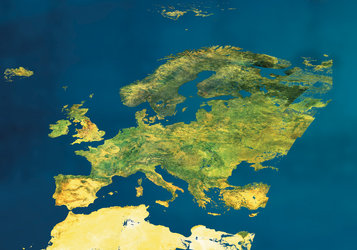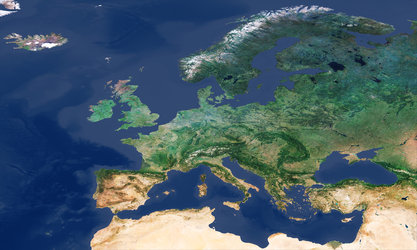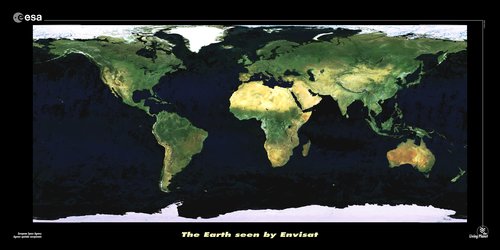Accept all cookies Accept only essential cookies See our Cookie Notice

About ESA
The European Space Agency (ESA) is Europe’s gateway to space. Its mission is to shape the development of Europe’s space capability and ensure that investment in space continues to deliver benefits to the citizens of Europe and the world.
Highlights
ESA - United space in Europe
This is ESA ESA facts Member States & Cooperating States Funding Director General Top management For Member State Delegations European vision European Space Policy ESA & EU Space Councils Responsibility & Sustainability Annual Report Calendar of meetings Corporate newsEstablishments & sites
ESA Headquarters ESA ESTEC ESA ESOC ESA ESRIN ESA EAC ESA ESAC Europe's Spaceport ESA ESEC ESA ECSAT Brussels Office Washington OfficeWorking with ESA
Business with ESA ESA Commercialisation Gateway Law at ESA Careers Cyber resilience at ESA IT at ESA Newsroom Partnerships Merchandising Licence Education Open Space Innovation Platform Integrity and Reporting Administrative Tribunal Health and SafetyMore about ESA
History ESA Historical Archives Exhibitions Publications Art & Culture ESA Merchandise Kids Diversity ESA Brand Centre ESA ChampionsLatest
Space in Member States
Find out more about space activities in our 23 Member States, and understand how ESA works together with their national agencies, institutions and organisations.
Science & Exploration
Exploring our Solar System and unlocking the secrets of the Universe
Go to topicAstronauts
Missions
Juice Euclid Webb Solar Orbiter BepiColombo Gaia ExoMars Cheops Exoplanet missions More missionsActivities
International Space Station Orion service module Gateway Concordia Caves & Pangaea BenefitsLatest
Space Safety
Protecting life and infrastructure on Earth and in orbit
Go to topicAsteroids
Asteroids and Planetary Defence Asteroid danger explained Flyeye telescope: asteroid detection Hera mission: asteroid deflection Near-Earth Object Coordination CentreSpace junk
About space debris Space debris by the numbers Space Environment Report In space refuelling, refurbishing and removingSafety from space
Clean Space ecodesign Zero Debris Technologies Space for Earth Supporting Sustainable DevelopmentLatest
Applications
Using space to benefit citizens and meet future challenges on Earth
Go to topicObserving the Earth
Observing the Earth Future EO Copernicus Meteorology Space for our climate Satellite missionsCommercialisation
ESA Commercialisation Gateway Open Space Innovation Platform Business Incubation ESA Space SolutionsLatest
Enabling & Support
Making space accessible and developing the technologies for the future
Go to topicBuilding missions
Space Engineering and Technology Test centre Laboratories Concurrent Design Facility Preparing for the future Shaping the Future Discovery and Preparation Advanced Concepts TeamSpace transportation
Space Transportation Ariane Vega Space Rider Future space transportation Boost! Europe's Spaceport Launches from Europe's Spaceport from 2012Latest

African mosaic
Thank you for liking
You have already liked this page, you can only like it once!
Using almost 7000 images captured by the Sentinel-2A satellite, this mosaic offers a cloud-free view of the African continent – about 20% of the total land area in the world. The majority of these separate images were taken between December 2015 and April 2016, totalling 32 TB of data. Thanks to Sentinel-2A’s 290 km-wide swath and 10-day revisit at the equator, the chance of imaging Earth’s surface when the skies are clear is relatively high. Nevertheless, being able to capture the Tropics cloud-free over the five months is remarkable.
Presented at the recent Living Planet Symposium in Prague, Czech Republic, this is the first mosaic of Africa generated through ESA’s Climate Change Initiative Land Cover project.
Launched in June 2015, Sentinel-2A carries a novel multispectral imager to provide information that is not only used to map changes in land cover, but is also used to improve agricultural practices, to monitor the world’s forests and to detect pollution in lakes and coastal waters.
Sentinel-2A’s identical twin, Sentinel-2B, is due to be launched in 2017. As a constellation, the two satellites will orbit 180° apart. Along with their wide swaths, this will allow Earth’s main land surfaces, large islands, as well as inland and coastal waters to be covered every five days. This will further improve the probability of gaining a cloud-free look at a particular location.
-
CREDIT
contains modified Copernicus Sentinel data (2016), processed by Brockmann Consult/ Université catholique de Louvain as part of ESA’s Climate Change Initiative Land Cover project -
LICENCE
CC BY-SA 3.0 IGO or ESA Standard Licence
(content can be used under either licence)

African land cover

MERIS mosaic of Africa - May 2004

A mosaic of satellite images showing a cloud-free Europe

Cloud-free Europe from Sentinel-3















 Germany
Germany
 Austria
Austria
 Belgium
Belgium
 Denmark
Denmark
 Spain
Spain
 Estonia
Estonia
 Finland
Finland
 France
France
 Greece
Greece
 Hungary
Hungary
 Ireland
Ireland
 Italy
Italy
 Luxembourg
Luxembourg
 Norway
Norway
 The Netherlands
The Netherlands
 Poland
Poland
 Portugal
Portugal
 Czechia
Czechia
 Romania
Romania
 United Kingdom
United Kingdom
 Slovenia
Slovenia
 Sweden
Sweden
 Switzerland
Switzerland

























